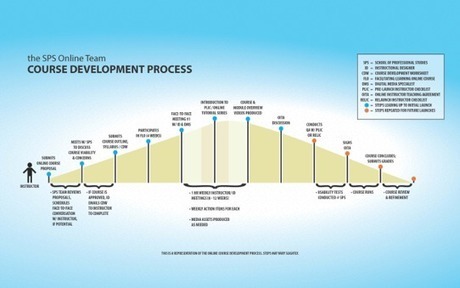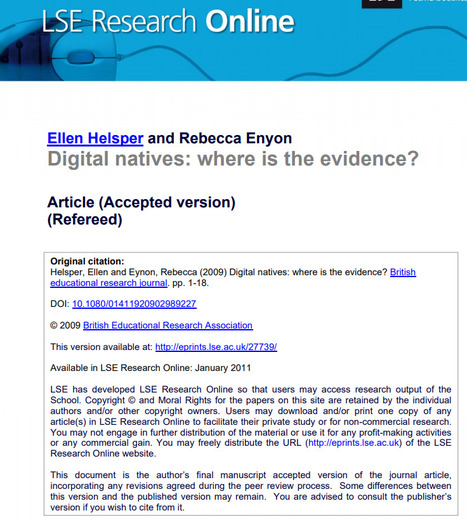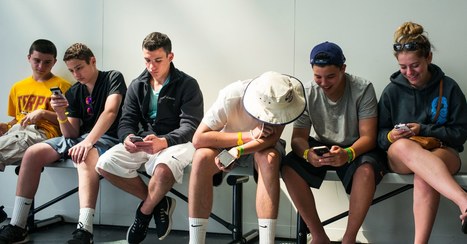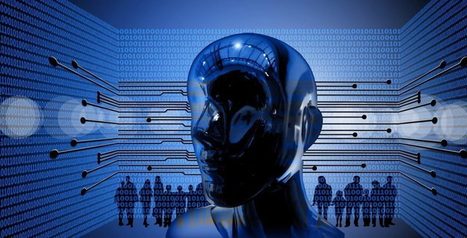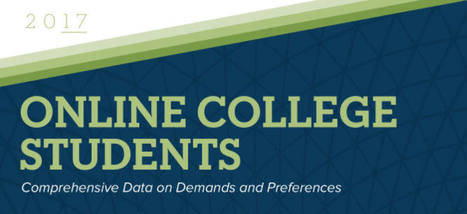 Your new post is loading...
 Your new post is loading...
Key Takeaway: The current wholesale adoption of unregulated Artificial Intelligence applications in schools poses a grave danger to democratic civil society and to individual freedom and liberty.
BOULDER, CO (MARCH 5, 2024)
Disregarding their own widely publicized appeals for regulating and slowing implementation of artificial intelligence (AI), leading tech giants like Google, Microsoft, and Meta are instead racing to evade regulation and incorporate AI into their platforms. A new NEPC policy brief, Time for a Pause: Without Effective Public Oversight, AI in Schools Will Do More Harm Than Good, warns of the dangers of unregulated AI in schools, highlighting democracy and privacy concerns. Authors Ben Williamson of the University of Edinburgh, and Alex Molnar and Faith Boninger of the University of Colorado Boulder, examine the evidence and conclude that the proliferation of AI in schools jeopardizes democratic values and personal freedoms.
Public education is a public and private good that’s essential to democratic civic life. The public must, therefore, be able to provide meaningful direction over schools through transparent democratic governance structures. Yet important discussions about AI’s potentially negative impacts on education are being overwhelmed by relentless rhetoric promoting its purported ability to positively transform teaching and learning. The result is that AI, with little public oversight, is on the verge of becoming a routine and overriding presence in schools.
Years of warnings and precedents have highlighted the risks posed by the widespread use of pre-AI digital technologies in education, which have obscured decision-making and enabled student data exploitation. Without effective public oversight, the introduction of opaque and unproven AI systems and applications will likely exacerbate these problems.
The authors explore the harms likely if lawmakers and others do not step in with carefully considered regulations. Integration of AI can degrade teacher-student relationships, corrupt curriculum with misinformation, encourage student performance bias, and lock schools into a system of expensive corporate technology. Further, they contend, AI is likely to exacerbate violations of student privacy, increase surveillance, and further reduce the transparency and accountability of educational decision-making. The authors advise that without responsible development and regulation, these opaque AI models and applications will become enmeshed in routine school processes. This will force students and teachers to become involuntary test subjects in a giant experiment in automated instruction and administration that is sure to be rife with unintended consequences and potentially negative effects. Once enmeshed, the only way to disentangle from AI would be to completely dismantle those systems.
The policy brief concludes by suggesting measures to prevent these extensive risks. Perhaps most importantly, the authors urge school leaders to pause the adoption of AI applications until policymakers have had sufficient time to thoroughly educate themselves and develop legislation and policies ensuring effective public oversight and control of its school applications. Find Time for a Pause: Without Effective Public Oversight, AI in Schools Will Do More Harm Than Good, by Ben Williamson, Alex Molnar, and Faith Boninger, at:
http://nepc.colorado.edu/publication/ai _______
Suggested Citation: Williamson, B., Molnar, A., & Boninger, F. (2024). Time for a pause: Without effective public oversight, AI in schools will do more harm than good. Boulder, CO: National Education Policy Center. Retrieved [date] from http://nepc.colorado.edu/publication/ai For original link to announcement, please see:
https://nepc.colorado.edu/publication-announcement/2024/03/ai ;
Via Roxana Marachi, PhD
These days, it seems my students can’t let a minute go by without checking TikTok and Instagram or responding to their friend’s latest post on Snapchat. Teens’ widespread access to smartphones for …
Via Tom D'Amico (@TDOttawa)
In many ways this report takes a similar approach to the GMU report and a prior one by Caroline Hoxby from Stanford University, which was subsequently withdrawn, in asking important questions but providing flawed analysis to support conclusions. The problems with the American Enterprise Institute (AEI) report lie in its description of the history of online education and the 50 percent rule, the usage of data to describe the "supply side" of online, and some misinterpretations of IPEDS data. The flaws are hard to overlook, which is a shame, in that much of the qualitative discussion on online education provides a nuanced set of answers to the questions posed above.
Via Jamie Smith
"Building on the earlier net generation and millennials concepts, Prensky popularised the notion of a generation of “digital native” students through his 2001 two-part series “Digital natives, digital immigrants” ..."
Via Leona Ungerer
There were no major surprises in Educause’s 2017 ECAR Study of Undergraduate Students and Information Technology. For four years running, the number of students preferring a blended learning environment that includes “some to mostly online components” has increased and those preferring a face-to-face only learning environment has continued to decline. The report did find, however, that tablets, which were gaining popularity a few years ago, are now on their way out as a device of preference.
Currently, dramatic changes take place in terms of rapidly emerging modes of communication, technologies, increased cultural diversity, evolving workplaces cultures, new challenges for equitable education and the varying and changing identities of students everywhere. Bearing this in mind, this article draws on a design-based research study to argue of the need for museums to respond to global trends and fulfill their social and educational imperatives by investigating the potential of a particular pedagogical framework that is grounded in culturally inclusive pedagogical practices and characteristics of ubiquitous learning.
Via Andreas Christodoulou, THE OFFICIAL ANDREASCY
"Massive open online courses have been signaled as a disruptive and democratizing force in online, distance education. This position paper critiques these claims ,…" ©
Via Leona Ungerer, Ines Bieler
Video is an essential component of most Massive Open Online Courses (MOOCs) and other forms of online learning. This exploratory study examines video as an inst
Via Peter Mellow
In Learning Online: What Research Tells Us About Whether, When and How, Barbara Means, et al, looked at 45 studies comparing college learners in online and face-to-face conditions and found that “In most meta-analyses of controlled studies comparing learning outcomes for online and face-to-face instruction, those who learn online fare as well as, and sometimes even better than, those experiencing the instruction in face-to-face format.”
Meeting the Needs of Online Teachers: Training and Challenges
Wednesday, 4/6/16, 2pm EDT
This session will present findings from a survey of Wisconsin Virtual School teachers about professional development timing and topics, top instructional challenges, and perceived needs for additional professional development.
JOLT: Journal of Online Learning and Teaching Michelle Scribner-MacLean
University of Massachusetts Lowell
Graduate School of Education
Lowell, MA USA
Michelle_ScribnerMacLean@uml.edu
Heather Miller
Richard Riley School of Education
Walden University, USA
heather.miller@waldenu.edu
Abstract
A co-teaching online environment has the potential to help more efficiently meet the needs of online learners and provide greater satisfaction for instructors. A well-trained pair of instructors can complement each other, meeting student needs in a timely manner, as well as providing students with the opportunity to view topics from different perspectives, and to gain more in-depth feedback about their work. Specific strategies for a successful online co-teaching experience, including: how to create a successful online learning community; achieve effective course management; provide systematic, in-depth assessment of student learning; and providing timely feedback will be addressed. Methods to improve upon one-another’s teaching strengths will be introduced as well as building community between your peer co-teacher and students.
Keywords : co-teaching, team teaching, online teachin
g
|
"A trusted, curated list of the best and most innovative edtech startups that can help you meet your institutional targets ..."
Via Leona Ungerer
In this post I discuss the nature (and weaknesses) of research in our field. I am broadly sympathetic with the arguments offered b
Via Peter Mellow, LGA
The science of how technology affects happiness needs a huge statistical upgrade. A new paper charts a path toward better research.
Via John Evans
So how can AI help?
Communication: Students and teachers will be able to communicate instantly with one another as well as to connect with other forms of AI around the world. Students instantly paired with peers, helping each student to expand their own personal learning networks, with personalized and more authentic connections that will meet the students’ interests and needs at any given moment. Think of the benefits for being able to converse with AI or a virtual peer, which has been located based on an assessment of student needs and error analyses. Build foreign language skills, talk to someone about school, family, life in a country being studied, possibilities are endless for language learning.
Differentiation: With the availability of AI, students and teachers will be able to connect with resources they need exactly when they need them. The entire internet of resources accessible within seconds, deliverable to each student saving valuable time for more interaction between teacher and student, and students and students. Through AI, students can have access to one to one tutors, creating more authentic learning experiences by pairing students with an expert or a virtual peer to learn with. Think of the benefits if each student could have instant access to a tutor wherever and whenever they needed one.
Personalization: What better way to offer more personalized learning opportunities for students than to have AI be able to analyze student responses, determine areas of need and interest, and find resources or create new questions to help students to greater understanding of the content. What about the potential for informing the classroom teacher, and working together to create new learning opportunities for students, but in a faster way, that relates directly to the student needs and offers authentic and timely feedback.
Exploration: With the rise of augmented and virtual reality, and the benefits of bringing these into the classroom for students to have a more immersive learning experience and to see places and explore things that otherwise they would not, AI can be a tremendous benefit for this. Through AI, resources could be found instantly based on student responses, or for the entire classroom to experience. Capabilities such as these are not something that will be limited by the time and place of the classroom setting. AI could show students want they want to explore, find ways to bring the content to life instantly.
Assessments: AI could help teachers to assess students and streamline the grading process, with the added benefit of being able to quickly take the data, provide an analysis for teachers, so that time can be saved for more classroom interactions. It can help with student achievement, making sure that each student has the opportunity to learn and grow, benefitting from the faster responses through AI.
Learn more / En savoir plus / Mehr erfahren: https://www.scoop.it/t/21st-century-learning-and-teaching/?&tag=AI https://www.scoop.it/t/21st-century-innovative-technologies-and-developments/?&tag=AI
Via Gust MEES
Discover who is studying online. “Online College Students 2017: Comprehensive Data on Demands and Preferences” explores a survey of 1,500 online students.
This special edition captures some of the recent investigations in e-assessment that move us beyond the traditional selected response formats of multiple-choice tests, short answer, fill-in-the-blanks, true-false, and matching. Higher-level cognitive and affective skills cannot readily be assessed using traditional selected response formats and more authentic e-assessments are being proposed (Kuh, Jankowski, Ikenberry, & Kinzie 2014).
Must Reads For Owners of Websites and Blogs.
Tony Bates: "In education, a ‘portfolio’ refers to a personal collection of information describing, documenting and recording a person’s achievements and learning. Portfolios are used for many different purposes such as a tool for evaluating leaning, for accreditation of prior experience, for continuing professional development, to assist a job application, or for a certification of competences acquired through a course or from work experience . An educational portfolio is mainly used to encourage personal reflection and involves the exchange of ideas and feedback. Many people have already used some kind of portfolio. Most of them have built a portfolio to collect evidence required to get certificates or to show what they have learned in a concrete situation or training. The development of information and learning technologies has led to the development of digital portfolios or electronic portfolios, commonly referred as e-Portfolios."
|



 Your new post is loading...
Your new post is loading...




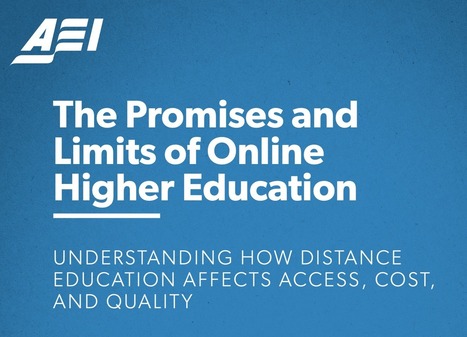



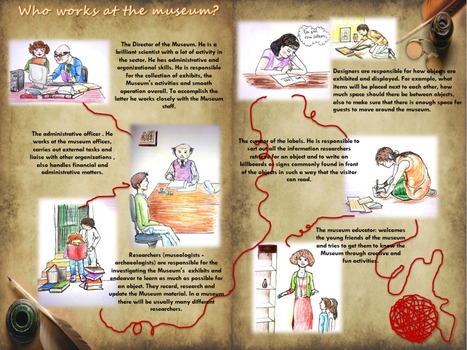


![Learning in MOOCs: The [un]democratisation of learning | Distance Learning, mLearning, Digital Education, Technology | Scoop.it](https://img.scoop.it/o2noGhGk9_6778cLZSWOPDl72eJkfbmt4t8yenImKBVvK0kTmF0xjctABnaLJIm9)
